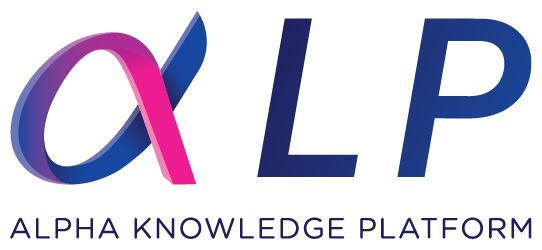TickerTape
Weekly Global Stablecoin & CBDC Update
This Week’s Stories
- We will be at the CB+DC Conference 2025!
- Ethereum Reaches Record Stablecoin Supply
- Business Stablecoins Adoption Momentum
- Stablecoins Could Disrupt Community Banks
- Stablecoin Retail Transfers Hit Record in August 2025
- Tax Research UK Warns About Stablecoin Trigger
- Tetra Digital Raises $10M for Canadian Stablecoin
- Toss Plans Won Stablecoin and Australian Expansion
- Sky Proposed GENIUS-Compliant Stablecoin
- White House Names New Crypto Policy Advisor
- Tether Meets South Korean Bank Officials
- Nasdaq to Launch Tokenized Securities Platform?
- OCC Signals Openness to Stablecoin Issuers in Banking System
- Europeans Pursue non-US Digital Payment Systems
- Trust Wallet Partners with Ondo Finance
- UPI-UPU Integration for Cross-Border Remittances
- Stablecoins May Strengthen Global US Monetary Dominance
- Minnesota’s First US Credit Union Stablecoin
- Native Markets Leads Early Voting in USDH Stablecoin Contest
- Wall Street Stablecoin Talent Race
- LitFinancial Launches Stablecoin for Treasury Operations

The annual CB+DC Conference is a key event for experts in digital currency. This year, it’s being held in Nassau, Bahamas, from September 9-11, in partnership with the Central Bank of The Bahamas, which is celebrating its 50th anniversary.
The conference brings together central bankers, retail bankers, tech innovators, policymakers, and academics to discuss the future of digital currencies. With the rise of Central Bank Digital Currencies (CBDCs), tokenized assets, and stablecoins, the financial world is changing fast. This conference is a place to share knowledge and ideas on how to handle these changes. Key topics include the impact of digital currencies on financial stability, how to regulate them, and how to keep them secure. The goal is to work together to build a safe and efficient future for digital finance.
Key Takeaways:
- The CB+DC Conference is a major international event focused on the future of digital money, including CBDCs, tokenized assets, and stablecoins.
- This year’s conference is a special collaboration with the Central Bank of The Bahamas to celebrate its 50th Anniversary.
- The event brings together a diverse group of experts, from central bankers and policymakers to technology innovators and academics, to foster collaboration and share knowledge.
- Key discussion topics include the impact of digital currencies on financial stability, the development of regulatory frameworks, and ensuring the security and privacy of new payment systems.
Why It Matters:
- The development of CBDCs and other digital currencies represents a fundamental shift in how we think about and use money.
- This conference is crucial for establishing shared principles and standards in a rapidly evolving field that currently lacks them.
- The discussions and collaborations at this event will directly influence how governments and financial institutions approach the creation and regulation of digital currencies, which will affect everyone.
- By bringing together key stakeholders, the conference helps to ensure that the future of digital finance is built in a way that is safe, efficient, and accessible for a global population.
Ethereum’s stablecoin supply reached an all-time high of $165 billion after adding approximately $5 billion in new tokens over the past week, representing more than double its supply since January 2024. Token Terminal data shows Ethereum added nearly $1 billion in stablecoins daily, maintaining a dominant 57% market share across all blockchains. Tron follows with 27% while Solana holds less than 4% of total stablecoin activity. The growth reflects increased demand for secure, decentralized financial infrastructure as Ethereum remains the primary network for issuing dollar-pegged digital assets. Additionally, tokenized gold on Ethereum doubled this year to $2.4 billion, with the platform controlling 77% of tokenized commodities market share, rising to 97% when including Polygon.
Key Takeaways:
- Ethereum reaches record $165 billion stablecoin supply, doubling since January 2024 with $5 billion weekly inflow
- Platform maintains dominant 57% market share of all blockchain stablecoin activity
- Daily stablecoin additions approach $1 billion reflecting strong institutional and retail demand
- Tokenized gold on Ethereum doubled to $2.4 billion in 2024, controlling 77% of commodities market
- Tron holds 27% stablecoin market share while Solana remains distant third at under 4%
- Growth driven by market preference for Ethereum’s security and established infrastructure
Why It Matters:
- Validates Ethereum as dominant infrastructure for stablecoin issuance and digital asset tokenization
- Demonstrates continued institutional confidence in Ethereum despite Layer 2 scaling solutions
- Shows practical implementation of real-world asset tokenization beyond simple payment applications
- Could accelerate traditional financial institution adoption through proven scalability and security
- Reflects broader transformation of global finance toward blockchain-based settlement infrastructure
- May influence regulatory approaches to stablecoins given Ethereum’s systemic importance
Stripe CEO Patrick Collison explained on September 5, 2025, that stablecoins are gaining business adoption because they offer faster, cheaper, and more reliable payments than traditional systems. Speaking in a Hacker News thread following Stripe and Paradigm’s Tempo blockchain launch, Collison acknowledged that Stripe had been “disappointed with crypto’s payments utility for much of the past decade” but changed course as businesses adopted stablecoins for real transactions. He cited examples including SpaceX using Bridge to manage money flows in hard-to-reach markets, Latin American fintech DolarApp relying on it for banking services, and an Argentinian bike importer using Stripe’s dashboard to pay suppliers. Collison emphasized that Tempo is designed to operate behind the scenes like SWIFT/ACH infrastructure.
Key Takeaways:
- Stripe CEO acknowledges company’s previous crypto skepticism but credits business stablecoin adoption for strategic shift
- SpaceX, DolarApp, and Argentinian importers using Stripe’s Bridge infrastructure for real business transactions
- Stablecoins provide faster, cheaper, more reliable payments compared to traditional banking systems
- Tempo blockchain designed as behind-the-scenes infrastructure similar to SWIFT/ACH networks
- Bridge acquisition demonstrates Stripe’s commitment to stablecoin payment infrastructure development
- Business adoption driven by practical utility rather than speculative cryptocurrency trading
Why It Matters:
- Provides authoritative validation of stablecoin utility from major payment processor leadership
- Demonstrates how practical business needs drive cryptocurrency infrastructure adoption
- Shows evolution from crypto skepticism to strategic integration based on real-world performance
- Could accelerate mainstream business stablecoin adoption through Stripe’s extensive merchant network
- Validates stablecoins as legitimate infrastructure for solving traditional payment system problems
- Reflects broader transformation of payments industry toward blockchain-based settlement mechanisms
Bloomberg analysis reveals growing concern among community banks that stablecoin adoption could disrupt local lending by drawing deposits away from traditional banking institutions. The report highlights how stablecoins have entered mainstream financial conversation thanks to Trump administration support, creating risks for community lenders that fund American homes and businesses. Small banks worry that consumers receiving paychecks in stablecoins could bypass traditional deposit relationships, reducing the capital available for local lending. This shift could particularly impact community banks’ ability to serve small businesses and residential mortgages, which depend on stable deposit bases. The analysis suggests stablecoin growth may force fundamental restructuring of community banking business models, with potential implications for credit availability in smaller markets.
Key Takeaways:
- Community banks express concern about stablecoin adoption disrupting traditional deposit relationships
- Payroll payments in stablecoins could bypass local banking institutions reducing lending capital
- Small banks particularly vulnerable due to dependence on deposits for local lending operations
- Trump administration support legitimizes stablecoins as mainstream financial instruments
- Potential impact on small business and residential mortgage lending in smaller communities
- May require fundamental restructuring of community banking business models
Why It Matters:
- Highlights unintended consequences of stablecoin adoption on traditional banking sector
- Shows how digital currency growth could affect credit availability in local communities
- Demonstrates need for policy consideration of stablecoin impact on banking system structure
- Could influence regulatory approaches to balance innovation with financial stability
- May accelerate community bank adaptation strategies or consolidation pressures
- Reflects broader transformation of financial services and its distributed economic impacts
CEX.io analysis reveals stablecoin retail transfers under $250 reached record $5.8 billion in August 2025, with 2025 volumes already surpassing all of 2024 by late summer. Binance Smart Chain captured nearly 40% of retail stablecoin activity while Tron lost market share, with transaction counts falling 1.3 million monthly despite maintaining significant volume. Ethereum mainnet experienced 81% volume growth and 184% transaction count increase in the sub-$250 segment as fees dropped over 70% during the past year. Survey data from over 2,600 consumers across Nigeria, India, Bangladesh, Pakistan, and Indonesia showed nearly 70% using stablecoins more frequently than the previous year to avoid high banking fees and slow transfer times.
Key Takeaways:
- Retail stablecoin transfers under $250 hit record $5.8 billion in August, surpassing 2024 totals early
- Binance Smart Chain captures 40% of retail activity while Tron loses market share despite volume
- Ethereum mainnet gains 81% volume and 184% transaction growth in retail segment
- 70% of emerging market users increased stablecoin usage to avoid banking fees and delays
- Ethereum fee reductions over 70% make mainnet competitive for smaller transactions
- Survey covers 2,600+ consumers across five major emerging market countries
Why It Matters:
- Demonstrates stablecoin evolution from crypto trading tools to mainstream financial infrastructure
- Shows practical adoption in emerging markets addressing real-world payment system limitations
- Validates blockchain technology’s ability to provide superior financial services for underserved populations
- Could accelerate global financial inclusion through accessible digital payment alternatives
- May influence traditional banking sector strategies for serving emerging market customers
- Reflects fundamental shift in how consumers access and use financial services globally
Tax Research UK published an analysis warning that stablecoins represent shadow banking risks that could crash the economy, citing Nobel Prize-winning economist Jean Tirole’s concerns about the $280 billion market. The analysis argues stablecoins are “shadow banking in disguise” with similar risks to those that nearly destroyed the global economy in 2008. Despite being marketed as safe, asset-backed cryptocurrencies, the research warns that stablecoin collapse would leave taxpayers to pick up the bill. The piece characterizes stablecoins as a fundamental threat to financial stability and democracy, arguing they are not actually money despite common perception. The warning emphasizes that stablecoins could crash the U.S. economy first, with other economies following due to interconnectedness.
Key Takeaways:
- Tax Research UK warns $280 billion stablecoin market poses 2008-style shadow banking risks
- Nobel economist Jean Tirole cited as expressing serious concerns about stablecoin stability
- Analysis characterizes stablecoins as disguised shadow banking threatening financial system
- Warns taxpayers would bear costs of stablecoin collapse despite private issuance
- Describes stablecoins as fundamental threat to financial stability and democratic governance
- Predicts U.S. economic crash could spread globally due to financial interconnectedness
Why It Matters:
- Provides contrarian perspective on stablecoin risks from academic and policy research community
- Raises important questions about systemic risk and taxpayer liability in stablecoin failures
- Could influence regulatory approaches to stablecoin oversight and reserve requirements
- Demonstrates ongoing debate about stablecoin safety and macroeconomic implications
- May affect public perception and policy support for stablecoin development
- Highlights need for robust regulatory frameworks to address potential systemic risks
Tetra Digital Group, an Alberta-based digital asset custodian, raised $10 million to develop and issue a regulated stablecoin pegged to the Canadian dollar. Backers include major Canadian financial institutions and fintechs: Shopify, Wealthsimple, Purpose, Shakepay, ATB Financial, National Bank, and Urbana Corporation, which holds a majority stake. The CAD-pegged stablecoin will be issued through Tetra Trust, the company’s regulated custody subsidiary, and backed 1:1 with Canadian dollar reserves held domestically. Subject to regulatory approval, the firm aims to launch in early 2026, targeting Canadian dollar payments and remittances at scale. This represents the first major Canadian dollar stablecoin initiative from a regulated entity.
Key Takeaways:
- Tetra Digital raises $10M from Shopify, Wealthsimple, and major Canadian banks for CAD stablecoin
- Token backed 1:1 with Canadian dollar reserves held domestically through regulated Tetra Trust
- Launch targeted for early 2026 pending regulatory approval from Canadian authorities
- Focuses on Canadian dollar payments and remittances to compete with USD-dominated market
- Represents first major regulated Canadian dollar stablecoin initiative from domestic entity
- Shows growing international competition to challenge U.S. dollar stablecoin dominance
Why It Matters:
- Demonstrates Canada’s strategic entry into domestic currency-pegged stablecoin development
- Shows institutional Canadian support for alternative to U.S. dollar-dominated stablecoin ecosystem
- Could accelerate adoption of non-USD stablecoins in international markets
- Validates growing trend of major economies developing sovereign currency stablecoin alternatives
- May influence other G7 nations to pursue similar domestic stablecoin initiatives
- Reflects competitive response to U.S. GENIUS Act regulatory framework and market leadership
South Korean fintech unicorn Toss announced plans to launch its “all-in-one” finance app in Australia this year and expand globally, while aiming to issue a Korean won-based stablecoin once regulations permit. Founder and CEO Lee Seung-gun revealed the international expansion strategy during interviews, with Australia serving as the first international market before broader rollout. The company, valued at $8 billion, seeks to replicate its domestic success offering payments, banking, investment, and insurance services through a single platform. Toss plans to issue a won-pegged stablecoin when South Korean regulations allow, joining other Asian nations developing domestic currency alternatives to dollar-backed tokens. The expansion reflects growing competition among Asian fintechs for global market share.
Key Takeaways:
- Toss plans Australia launch in 2025 as first step in global expansion of all-in-one finance app
- $8 billion unicorn aims to issue Korean won stablecoin once domestic regulations permit
- Expansion targets replicating domestic success with integrated payments, banking, and investment services
- Won stablecoin plans align with broader Asian trend toward domestic currency-pegged alternatives
- Global push reflects intensifying competition among Asian fintechs for international market share
- Strategy positions Toss to compete with established global fintech platforms and neobanks
Why It Matters:
- Demonstrates South Korean fintech industry’s confidence and ambitions for global expansion
- Shows continued Asian momentum toward domestic currency stablecoins challenging dollar dominance
- Could accelerate international adoption of Korean won digital assets and payments
- Reflects growing competition between Asian and Western fintech platforms globally
- May influence South Korean regulatory timeline for stablecoin framework development
- Validates super-app model’s potential for international scalability beyond domestic markets
Sky, formerly MakerDAO, submitted a proposal to power Hyperliquid’s USDH stablecoin, leveraging its $8 billion balance sheet and B- S&P credit rating—the first ever issued to a DeFi protocol. The proposal offers 4.85% returns on USDH holdings, $2.2 billion in instant redemption liquidity through Sky’s Peg Stability Module, and a $25 million “Hyperliquid Genesis Star” investment to bootstrap DeFi development. Sky joins Paxos, Frax, Agora, and Native Markets competing for the lucrative contract with Hyperliquid, which holds $5.5 billion in USDC deposits (7.5% of total supply) and handled $400 billion in trading volume last month. Validators will vote September 14, with the Hyperliquid Foundation abstaining from the decision.
Key Takeaways:
- Sky leverages $8B balance sheet and first-ever DeFi protocol S&P credit rating (B-) for USDH proposal
- Offers 4.85% yields on USDH plus $2.2B instant redemption liquidity via Peg Stability Module
- Competes with Paxos, Frax, Agora, and Native Markets for $5.5B USDC contract (7.5% of supply)
- Includes $25M “Genesis Star” investment to bootstrap DeFi development on Hyperliquid platform
- Validator vote scheduled September 14 to determine USDH stablecoin issuer selection
- Contract represents one of DeFi’s most valuable due to Hyperliquid’s $400B monthly volume
Why It Matters:
- Demonstrates fierce competition among major protocols for lucrative stablecoin issuance contracts
- Shows evolution of DeFi toward institutional-grade services with credit ratings and yield products
- Could establish precedent for yield-bearing stablecoins becoming standard rather than exception
- Validates Hyperliquid’s position as major DeFi platform attracting institutional protocol partnerships
- May accelerate development of competitive yield-bearing stablecoin products across DeFi
- Reflects broader trend of traditional finance concepts integrating with decentralized protocols
President Trump appointed Patrick Witt as executive director of the President’s Council of Advisers on Digital Assets, with market structure legislation named as the administration’s top crypto policy priority. Witt will oversee implementation of the new stablecoin law and development of the U.S. bitcoin strategic reserve. The appointment signals continued high-level administration focus on cryptocurrency policy following the GENIUS Act passage. Witt’s role includes coordinating federal agency crypto policies and advising on digital asset strategy. The position reflects Trump’s commitment to establishing comprehensive crypto regulatory frameworks and maintaining U.S. leadership in digital asset innovation. Market structure legislation aims to provide clear regulatory guidelines for cryptocurrency trading and institutional adoption.
Key Takeaways:
- Trump appoints Patrick Witt as executive director of President’s Council of Advisers on Digital Assets
- Market structure legislation identified as top administration crypto policy priority
- Role includes overseeing stablecoin law implementation and U.S. bitcoin reserve development
- Position demonstrates continued high-level White House focus on cryptocurrency policy coordination
- Witt will coordinate federal agency crypto policies and advise on digital asset strategy
- Appointment reflects administration commitment to comprehensive crypto regulatory frameworks
Why It Matters:
- Shows Trump administration’s continued prioritization of cryptocurrency policy development
- Could accelerate implementation of comprehensive market structure legislation
- Demonstrates institutional approach to crypto policy coordination across federal agencies
- May influence Congressional timeline for passing additional digital asset legislation
- Reflects growing importance of crypto policy in national economic and financial strategy
- Could enhance U.S. competitiveness in global digital asset regulatory leadership
Tether executives met with officials from South Korean financial heavyweight Shinhan Bank on September 8, 2025, according to MoneyS reports. Tether officials are in South Korea attending a domestic blockchain conference while reportedly planning meetings with various financial institutions and regulatory bodies. The meetings occur amid growing South Korean interest in stablecoin development following the government’s decision to halt CBDC plans in favor of private stablecoin alternatives. South Korea has emerged as a key battleground for stablecoin adoption in Asia, with multiple companies including KakaoBank exploring won-pegged token issuance. The Tether meetings suggest potential partnerships or regulatory discussions about expanding USDT operations in the Korean market.
Key Takeaways:
- Tether executives meet with Shinhan Bank officials on September 8 during South Korean blockchain conference
- Meetings reportedly include discussions with various financial institutions and regulatory bodies
- Occurs amid South Korea’s shift from CBDC development to private stablecoin alternative support
- South Korea emerging as key Asian battleground for stablecoin adoption and partnerships
- Multiple Korean companies including KakaoBank exploring domestic won-pegged stablecoin issuance
- Suggests potential Tether expansion or partnership discussions in Korean financial market
Why It Matters:
- Demonstrates Tether’s strategic focus on expanding in major Asian financial markets
- Shows continued institutional interest in stablecoin partnerships despite regulatory uncertainties
- Could accelerate South Korean stablecoin market development through established issuer involvement
- May influence Korean regulatory approaches to international stablecoin operation frameworks
- Reflects broader competition among stablecoin issuers for Asian market positioning
- Could impact Korean won stablecoin development through potential partnership structures
Nasdaq filed a proposal with the SEC on September 8, 2025, to launch trading of tokenized securities on a parallel blockchain-based exchange, allowing investors to trade equity either via traditional means or on-chain with equal priority. The proposal would enable customers to trade stocks like Apple or Tesla through blockchain tokens representing the same shares, with trades clearing instantly via smart contracts while still settling through the usual clearinghouse (DTCC). Nasdaq emphasized that blockchain-based trades would have the same priority as traditional trades, focusing on efficiency and optionality rather than bypassing regulations. This represents a major milestone in traditional finance-crypto convergence, with Nasdaq becoming one of the world’s largest stock exchanges to embrace tokenization technology.
Key Takeaways:
- Nasdaq files SEC proposal on September 8 to launch parallel blockchain-based tokenized securities trading
- Platform would offer investors choice between traditional trading and on-chain token representation
- Blockchain trades would have equal priority with conventional trades, settling through DTCC
- Enables instant clearing via smart contracts while maintaining regulatory compliance frameworks
- Represents major TradFi-crypto convergence milestone from world’s second-largest stock exchange
- Could accelerate regulatory approval and mainstream adoption of tokenized securities products
Why It Matters:
- Demonstrates major traditional financial institution’s commitment to blockchain integration and innovation
- Could accelerate institutional adoption of tokenized securities and real-world asset tokenization
- May influence other major exchanges to develop similar blockchain-based trading capabilities
- Shows practical implementation of crypto technology for improving traditional financial infrastructure
- Could establish precedent for hybrid traditional-blockchain financial systems and operations
- Reflects broader trend of established financial institutions embracing rather than competing with crypto
The Office of the Comptroller of the Currency (OCC) signaled openness on September 8, 2025, to de novo bank formation, mergers, and stablecoin issuers entering the traditional banking system. The regulatory announcement suggests a more accommodating stance toward cryptocurrency integration within federally regulated banking institutions. This development comes as the GENIUS Act implementation creates clearer pathways for stablecoin businesses to operate within established banking frameworks. The OCC’s position indicates potential streamlining of approval processes for crypto-focused institutions seeking federal banking charters. The announcement reflects broader regulatory shifts under the Trump administration toward integrating digital assets into traditional financial infrastructure rather than maintaining separation between crypto and banking sectors.
Key Takeaways:
- OCC signals openness to stablecoin issuers, de novo banks, and crypto-banking integration on September 8
- Suggests streamlined approval processes for crypto-focused institutions seeking federal banking charters
- Reflects Trump administration’s broader strategy of integrating digital assets into traditional finance
- Comes amid GENIUS Act implementation creating clearer regulatory pathways for stablecoin businesses
- Indicates potential for stablecoin issuers to access traditional banking services and infrastructure
- Represents shift from separation toward integration of crypto and banking sectors
Why It Matters:
- Could accelerate mainstream adoption of stablecoins through traditional banking channel access
- Demonstrates federal banking regulator’s practical implementation of pro-crypto policy stance
- May influence other banking regulators to adopt similar accommodating approaches to digital assets
- Shows path for stablecoin businesses to achieve greater regulatory legitimacy and market access
- Could reduce barriers between traditional banking and digital asset sectors
- Reflects broader transformation of U.S. financial regulatory approach toward cryptocurrency integration
As cash usage declines across Europe, leaders are accelerating efforts to achieve digital payments independence from U.S.-dominated systems through the digital euro project. The initiative faces significant technical hurdles including integrating new digital currency into existing cards, mobile wallets, QR codes, and cash systems infrastructure. European policymakers emphasize the strategic importance of monetary sovereignty as digital payments become predominant, reducing reliance on American payment networks and dollar-based stablecoins. The project represents Europe’s response to growing digital currency competition and aims to preserve European Central Bank control over monetary policy in an increasingly digital financial landscape. Implementation challenges include ensuring interoperability with existing payment infrastructure while maintaining privacy and security requirements.
Key Takeaways:
- European leaders accelerate digital euro development to reduce dependence on U.S. payment systems
- Technical challenges include integrating digital currency with existing payment infrastructure (cards, wallets, QR codes)
- Initiative driven by declining cash usage and strategic monetary sovereignty considerations
- Aims to counter U.S. dominance through dollar-based stablecoins and American payment networks
- Faces implementation challenges balancing innovation with privacy, security, and interoperability requirements
- Represents European response to growing international digital currency competition
Why It Matters:
- Shows geopolitical dimensions of digital currency development and monetary sovereignty competition
- Could accelerate European digital euro implementation through strategic necessity rather than just innovation
- Demonstrates how declining cash usage creates urgency for central bank digital currency alternatives
- May influence other regions to develop domestic digital currency capabilities for strategic independence
- Reflects broader trend of nations using digital currencies to reduce dependence on dominant systems
- Could reshape global digital payments landscape if Europe successfully implements comprehensive alternative
Trust Wallet announced a partnership with Ondo Finance on September 8, 2025, to offer tokenized stocks and ETFs through its platform, enabling users to trade traditional securities via blockchain technology. The collaboration allows Trust Wallet’s millions of users to access tokenized versions of stocks and exchange-traded funds directly through their crypto wallets. This partnership represents convergence of traditional securities trading with decentralized finance infrastructure, providing blockchain-native access to conventional investment products. The integration eliminates traditional brokerage requirements for stock trading while maintaining regulatory compliance through Ondo Finance’s licensed framework. Users can trade tokenized securities alongside cryptocurrencies within a single wallet interface, streamlining investment portfolio management across digital and traditional assets.
Key Takeaways:
- Trust Wallet partners with Ondo Finance to offer tokenized stocks and ETFs on September 8, 2025
- Enables millions of users to trade traditional securities through blockchain-native wallet interface
- Eliminates traditional brokerage requirements while maintaining regulatory compliance frameworks
- Allows unified portfolio management across cryptocurrencies and tokenized traditional securities
- Represents practical convergence of DeFi infrastructure with conventional investment products
- Streamlines access to traditional finance through established crypto wallet user experience
Why It Matters:
- Demonstrates practical implementation of real-world asset tokenization beyond conceptual discussions
- Shows how crypto infrastructure can expand access to traditional financial products
- Could accelerate retail adoption of tokenized securities through familiar crypto wallet interfaces
- May influence other major wallet providers to integrate similar traditional asset offerings
- Validates business model for bridging traditional finance and crypto through tokenization
- Reflects growing institutional confidence in regulated tokenized asset products
At the 28th Universal Postal Congress in Dubai on 9 September 2025, India’s Communications Minister Jyotiraditya Scindia unveiled the UPI–UPU integration project, a collaboration between India Post’s Department of Posts, NPCI International Payments Limited and the Universal Postal Union. By linking India’s Unified Payments Interface (UPI) with the UPU’s Interconnection Platform, the initiative leverages the postal network’s global reach and UPI’s instant, low-cost transactions to enable faster, safer, more affordable cross-border remittances. Leveraging India’s digital public infrastructure, specifically Aadhaar, Jan Dhan, and Post Payments Bank accounts, the project aims to advance financial inclusion, with a particular focus on empowering women. Scindia committed US $10 million in funding for e-commerce and digital payments innovation and announced India’s bid for seats on the UPU’s governing bodies. Industry leaders praised the model as a blueprint for interoperable, inclusive payment rails worldwide.
Key Takeaways:
- UPI and UPU platforms integrated to deliver instant, low-cost cross-border remittances via the postal network.
- Leveraging India’s digital public infrastructure, including Aadhaar, Jan Dhan, and India Post Payments Bank, to advance financial inclusion.
- US $10 million committed to support innovation in e-commerce and digital payments.
- India seeks election to UPU Council of Administration and Postal Operations Council to shape global postal policy.
- Fintech and postal leaders highlighted the model’s potential for secure, transparent, cost-effective international money transfers.
Why It Matters:
- Pioneers a public–public integration of national payment rails and postal networks, expanding global remittance options.
- Enhances financial inclusion for migrants and under-banked populations by leveraging ubiquitous postal infrastructure.
- Demonstrates India’s leadership in designing interoperable, scalable digital public goods for payments.
- Sets a precedent for other countries to harness postal networks for cross-border payment innovations.
- Reinforces the role of digital public infrastructure in driving equitable access to financial services.
Dollar-pegged stablecoins, according to Reuters analysis, may strengthen U.S. global monetary dominance instead of weakening it. This could revive America’s “exorbitant privilege,” which refers to the unique advantages the U.S. gains from the dollar’s status as a reserve currency. The $280 billion stablecoin market, overwhelmingly pegged to the dollar, creates new mechanisms for global dollar demand while generating concerns about its private sector nature. Unlike traditional government-controlled monetary instruments, stablecoins represent privatized dollar infrastructure that operates beyond direct state control. The analysis notes increasing anxiety about whether private stablecoin dominance enhances or threatens traditional monetary sovereignty, as digital dollar demand grows through blockchain-based payment rails rather than conventional banking systems.
Key Takeaways:
- Stablecoins may reinforce rather than diminish U.S. dollar global dominance and “exorbitant privilege”
- $280 billion stablecoin market overwhelmingly pegged to dollar creates new mechanisms for global demand
- Private sector nature of stablecoins adds complexity to traditional monetary sovereignty concepts
- Digital dollar demand grows through blockchain rails rather than conventional banking systems
- Analysis highlights tension between enhanced dollar influence and reduced direct state control
- Stablecoins represent privatized dollar infrastructure operating beyond traditional government oversight
Why It Matters:
- Challenges assumptions about “de-dollarization” trends and cryptocurrency’s threat to dollar dominance
- Shows how digital innovation can strengthen rather than weaken existing monetary hegemonies
- Demonstrates complex relationship between private innovation and state monetary power
- Could influence U.S. policy approaches to stablecoin regulation and international competitiveness
- May affect other nations’ strategies for developing alternative currency-pegged digital assets
- Reflects broader questions about monetary sovereignty in an increasingly digital global economy
St. Cloud Financial Credit Union announced plans to launch Cloud Dollar (CLDUSD), claiming to be the first stablecoin from a U.S. credit union, by late 2025. The $400 million asset institution developed the token with blockchain firm Metallicus and financial technology provider DaLand CUSO, integrating it directly into the credit union’s banking system. Unlike mainstream stablecoins like USDT or USDC, Cloud Dollar connects directly to the credit union’s infrastructure, enabling instant, low-cost transactions for members while keeping deposits on-platform. The initiative highlights how smaller financial institutions are leveraging blockchain technology to compete with fintech companies following the GENIUS Act’s federal stablecoin regulations. The stablecoin will operate on Metallicus’ Metal Blockchain through DaLand CUSO’s Coin2Core software.
Key Takeaways:
- St. Cloud Financial Credit Union launches first U.S. credit union stablecoin Cloud Dollar by late 2025
- $400 million institution integrates stablecoin directly into banking system via blockchain technology
- Developed with Metallicus and DaLand CUSO using Metal Blockchain and Coin2Core software
- Enables instant, low-cost member transactions while maintaining on-platform deposits
- Initiative helps smaller institutions compete with fintechs following GENIUS Act implementation
- Differs from mainstream stablecoins by direct integration with credit union infrastructure
Why It Matters:
- Demonstrates practical blockchain adoption by traditional community financial institutions
- Shows how GENIUS Act enables smaller institutions to innovate with regulated stablecoin products
- Could influence other credit unions and community banks to develop similar digital currency offerings
- Validates blockchain technology’s utility for improving member services and operational efficiency
- Reflects broader trend of traditional finance institutions embracing rather than resisting cryptocurrency innovation
- May accelerate community-level adoption of digital currencies through trusted local institutions
Native Markets, aligned with Stripe’s blockchain infrastructure, leads early voting for Hyperliquid’s USDH stablecoin contract with 30.8% of delegated stake ahead of the September 14 deadline. The Stripe-connected team has backing from major validators including infinitefield.xyz (13.5%) and Alphaticks (5.2%). Paxos Labs trails at 7.6% with support from B-Harvest and HyBridge, while Ethena holds 4.5%. However, 57% of stake remains unassigned, including influential validators like Nansen x HypurrCollective (18%) and Galaxy Digital. The winner will control USDH backed by Hyperliquid’s $5.5 billion USDC deposits (7.5% of total supply), redirecting hundreds of millions in annual Treasury yield. Native Markets promises yield-sharing to the Assistance Fund and HYPE token buybacks.
Key Takeaways:
- Native Markets leads Hyperliquid USDH voting with 30.8% stake, but 57% remains unassigned
- Contest winner controls $5.5 billion USDC deposits representing 7.5% of total stablecoin supply
- Major validators including Galaxy Digital and Nansen x HypurrCollective have not yet voted
- Native Markets offers Stripe infrastructure with yield-sharing and HYPE buyback programs
- Paxos Labs pledges 95% of earnings to buybacks while Frax promises 100% yield to users
- September 14 deadline approaches for one of crypto’s most valuable stablecoin contracts
Why It Matters:
- Represents one of cryptocurrency’s largest and most competitive stablecoin issuer selections
- Could redirect hundreds of millions in Treasury yield from Circle to winning protocol
- Demonstrates fierce competition among major institutions for lucrative stablecoin contracts
- Shows evolution toward yield-bearing stablecoins and revenue-sharing models
- May influence future stablecoin business models and competitive dynamics across DeFi
- Reflects growing institutional stakes in decentralized finance protocol governance and economics
The stablecoin boom has triggered an intense talent war on Wall Street, with companies struggling to fill specialized roles as compensation packages soar to unprecedented levels. Crypto wallet technology provider Dfns and similar firms face difficulties recruiting qualified professionals as established financial institutions and emerging stablecoin issuers compete aggressively for limited talent pools. The shortage of professionals with both traditional finance credentials and blockchain expertise has created bidding wars for key positions, particularly in compliance, treasury management, and technical development roles. Salaries for stablecoin-related positions have increased dramatically, with some senior roles commanding premium compensation packages. The talent crunch reflects the rapid maturation of the stablecoin sector following regulatory clarity and institutional adoption.
Key Takeaways:
- Intense Wall Street talent race for stablecoin professionals drives soaring compensation levels
- Companies like Dfns struggle to fill specialized roles requiring both finance and blockchain expertise
- Established institutions and emerging issuers compete aggressively for limited talent pools
- Premium salaries commanded for compliance, treasury management, and technical development positions
- Talent shortage reflects rapid stablecoin sector maturation following regulatory clarity
- Bidding wars demonstrate institutional commitment to stablecoin business development
Why It Matters:
- Shows rapid professionalization and institutionalization of stablecoin sector
- Demonstrates significant capital commitment from traditional finance to digital asset innovation
- Could accelerate sector development through attracted top-tier professional talent
- Reflects broader transformation of Wall Street toward cryptocurrency and blockchain integration
- May influence educational institutions to develop specialized digital asset finance programs
- Validates stablecoins as legitimate career path for traditional finance professionals
Michigan-based mortgage lender LitFinancial launched litUSD, a U.S. dollar stablecoin on Ethereum, to reduce funding costs and improve treasury management operations. The 1:1 cash-backed stablecoin aims to revolutionize mortgage finance through blockchain technology, with plans to explore on-chain settlement of mortgage payments and public loan performance tracking. This approach could reshape liquidity in the secondary mortgage market by enabling transparent, real-time monitoring of loan performance. The launch reflects growing adoption of stablecoins beyond crypto natives, with projected payment volumes reaching $1 trillion by 2030. LitFinancial’s initiative demonstrates how specialized industries are leveraging the GENIUS Act’s regulatory framework to integrate blockchain technology into traditional business operations.
Key Takeaways:
- LitFinancial launches litUSD stablecoin on Ethereum for mortgage lending treasury operations
- Plans on-chain mortgage payment settlement and public loan performance tracking
- Could reshape secondary mortgage market liquidity through transparent blockchain monitoring
- Reflects growing stablecoin adoption beyond crypto with $1T projected 2030 payment volume
- Demonstrates GENIUS Act enabling industry-specific blockchain integration
- Shows mortgage lending innovation through regulated stablecoin technology adoption
Why It Matters:
- Demonstrates practical blockchain adoption in traditional mortgage lending industry
- Shows how regulatory clarity enables sector-specific stablecoin innovation and integration
- Could influence other real estate finance companies to adopt similar blockchain solutions
- Validates stablecoins’ utility for specialized industry operations beyond general payments
- May accelerate transformation of mortgage markets through increased transparency and efficiency
- Reflects broader trend of traditional industries leveraging cryptocurrency technology for operational improvements
Powered by






